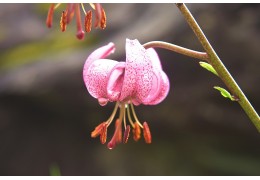Catégories
Search in blog
The origins of the tradition of offering lily of the valley on May 1st
On May 1st, tradition dictates that lily of the valley be offered as a symbol of happiness and luck. This custom dates back several centuries and remains deeply rooted in our cultures. But where does this tradition come from? What are the origins of May 1st lily of the valley? This article explores various theories and legends that explain this tradition.
The Celtic origins of May 1st
May 1st is an important date in Celtic tradition. It is indeed the festival of Beltane, which marks the beginning of summer and celebrates the renewal of nature. This festival was an occasion for dances and celebrations, during which people adorned themselves with flowers. Lily of the valley, with its white bells and delicate scent, was among the flowers commonly used in these celebrations.
Lily of the valley as a symbol of the Renaissance
In the 16th century, lily of the valley became a symbol of the Renaissance, a period of artistic and intellectual renewal in Europe. The flower is then associated with the Greek goddess Maia, protector of nature and fertility. May 1st thus becomes the festival of Maia, celebrated by offering lily of the valley as a tribute to the goddess.


Lily of the valley, a symbol of labor
In the 19th century, the tradition of offering lily of the valley on May 1st takes on another meaning. In 1886, a demonstration for the eight-hour workday turns into a tragedy in Chicago, with the death of several protesters. In homage to these labor activists, May 1st becomes International Workers' Day. Lily of the valley, a symbol of spring and renewal, is then associated with workers' struggle and the demand for a fundamental right: the right to work.
Lily of the valley, a French tradition
In France, the tradition of offering lily of the valley on May 1st originated in the 20th century. The flower is commercially available in large quantities during this time of the year and has become a symbol of spring and the joy of life. This tradition has become deeply rooted in our cultures, to the point of becoming a true institution.
FAQ
What is the origin of the name "muguet" ?
The name "muguet" is believed to come from the Latin "maius," which means "May." Indeed, it is during this time of the year that the flower blooms.
Is lily of the valley toxic ?
Yes, lily of the valley is a toxic plant, especially its berries. It is essential not to consume them.
Why do we offer lily of the valley on May 1st ?
The tradition of offering lily of the valley on May 1st dates back several centuries. This tradition has evolved over time, but today it is associated with various symbols such as spring, luck, joy of life, labor, etc.
Can lily of the valley be planted in the garden ?
Yes, it is possible to plant lily of the valley in the garden, but it is important to take precautions as it is an invasive plant that can spread rapidly.
Does lily of the valley have medicinal virtues ?
Lily of the valley is a plant that has been used in traditional medicine for its diuretic, antispasmodic, and cardiotonic properties. However, it is primarily used today as an ornamental plan.
Conclusion
The May 1st lily of the valley tradition has been rooted in our culture for centuries. The origins of this tradition are diverse, but they are all associated with symbols such as spring, luck, joy of life, or labor. This tradition is very popular in Switzerland today, where it generates millions of lily of the valley sales every year.
Ce contenu pourrait aussi vous intéresser
-
 The rose: zoom on its symbolism and colors
Read morePosté dans : Cultural point18/01/2021
The rose: zoom on its symbolism and colors
Read morePosté dans : Cultural point18/01/2021 -
 Bouquet of Roses: Origins and Popular Varieties
Read morePosté dans : Cultural point02/08/2023
Bouquet of Roses: Origins and Popular Varieties
Read morePosté dans : Cultural point02/08/2023 -
 The emblematic native flowers of Switzerland and their uses
Read morePosté dans : Cultural point03/07/2023
The emblematic native flowers of Switzerland and their uses
Read morePosté dans : Cultural point03/07/2023


















